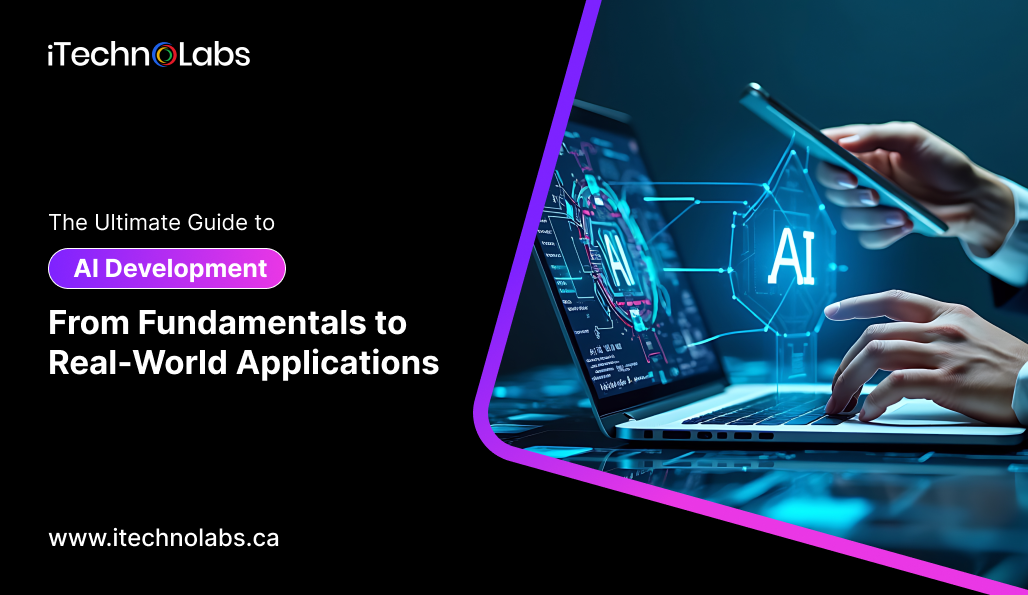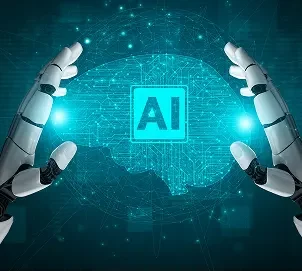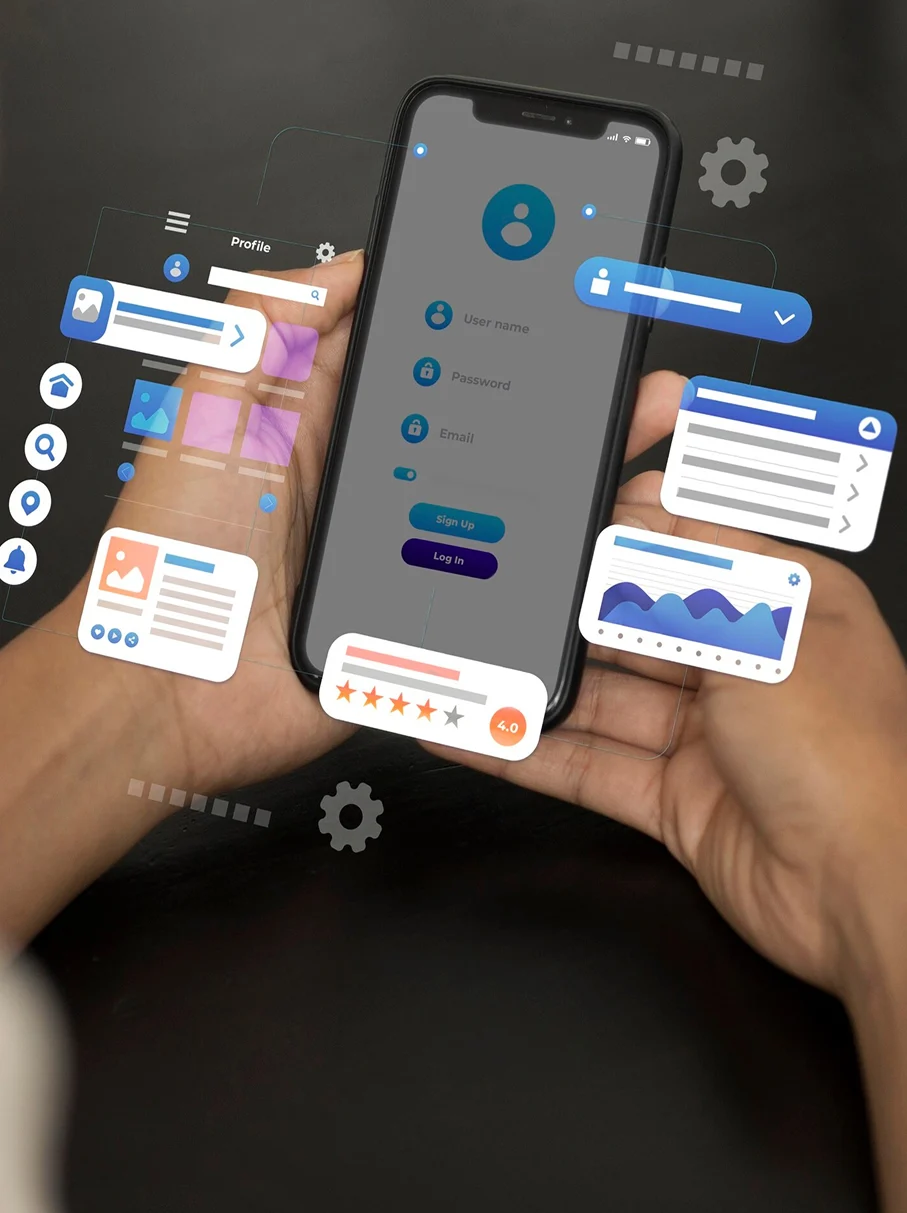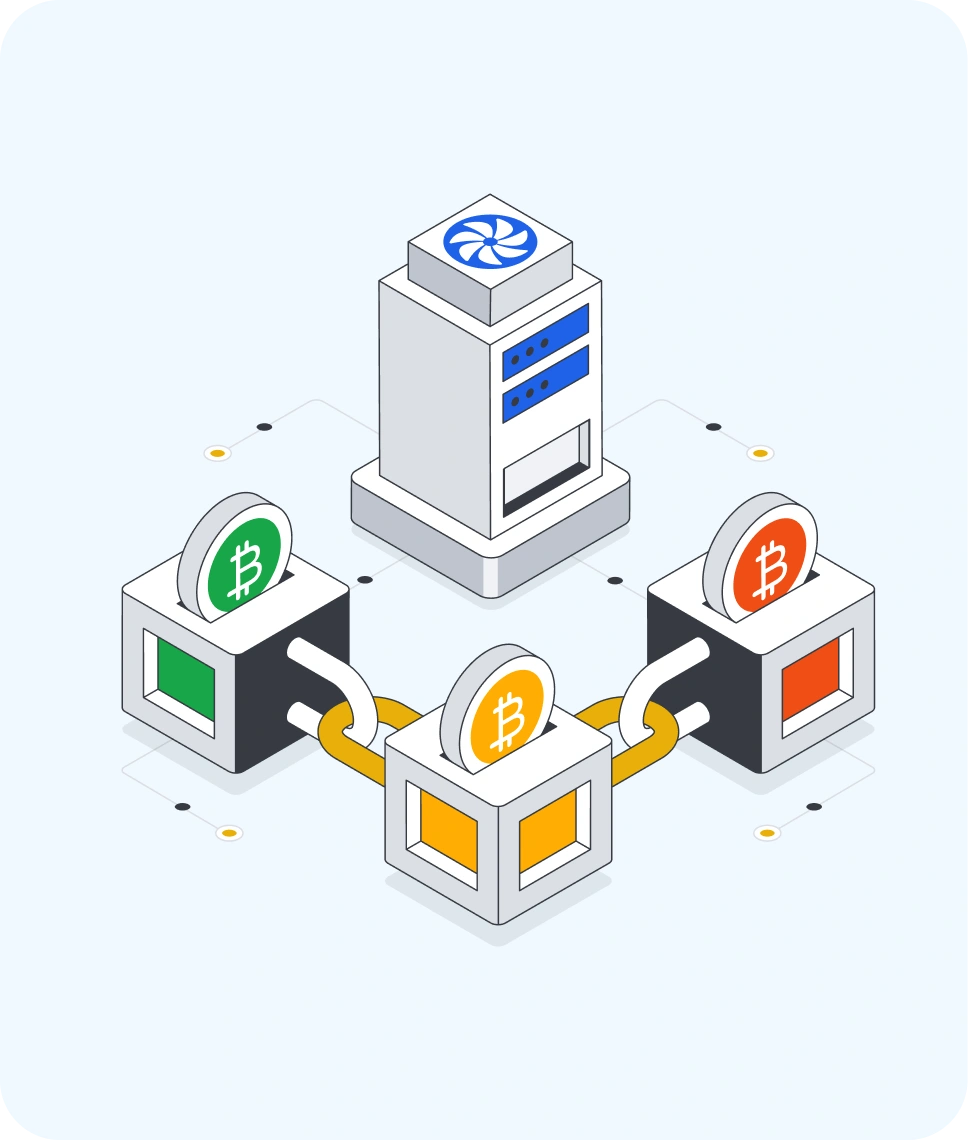In this AI development guide we are going to explore what AI development actually is, the components of AI, AI development process and more.
AI is the most popular buzzword of 2025 which is used by not just individuals but also by top companies globally to improve their teams’ productivity, attract more customers, save time, and enhance efficiency. AI development refers to the process of creating such softwares which requires human intelligence and can perform tasks like learning, reasoning, problem solving, and decision making.
You must have heard terms like machine learning, deep learning, natural language processing, all these come under AI. Without wasting time let’s get started with this ultimate AI development guide.
What is AI Development?
AI development refers to the process of creating computers and softwares that need human intelligence to learn, think, create, and make decisions.
In today’s technology-driven world, people are using AI for everyday tasks. Be it planning a trip, writing a blog, or creating a resume, AI is making people’s lives better and easier. Not just individuals but organizations worldwide use AI tools to enhance their processes, boost their sales, improve customer satisfaction rate and more. The AI-driven tools are used by people across industries like cybersecurity, automobile, healthcare, supply chain, education and others. Writers, coders, developers, managers, teachers all are using AI development tools for improving productivity, saving time and cutting costs.
Components of Artificial Intelligence
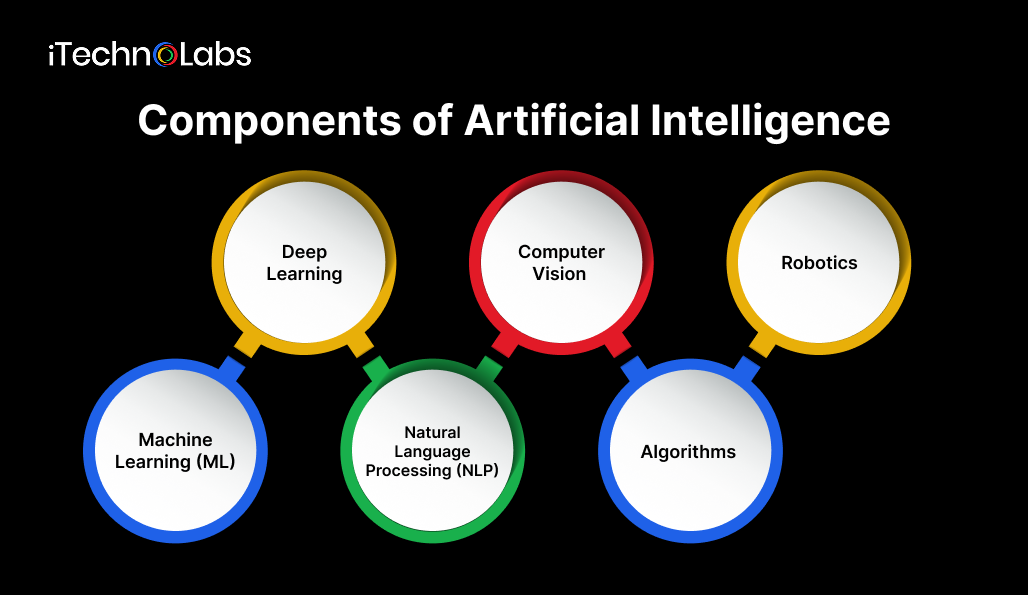
To perform every specific task the artificial intelligence umbrella offers a different technology. The most popular components of the artificial intelligence ecosystem are machine learning, deep learning, natural language processing, computer vision, algorithms, and robotics. Let’s learn more about these techniques and their applications as well:
1. Machine Learning (ML)
Machine learning is the capability of AI development that allows it to analyze large volumes of data in no time for making decisions and predictions. ML algorithms are used for personalized recommendations, image recognition, and fraud detection.
The advantages of machine learning are automation of repetitive tasks, informed decision-making, optimal resource allocation, improved customer experience, and consistent improvement.
2. Deep Learning
Deep learning is a type of machine learning that enables AI tools to analyze complex data like pictures, sounds, text and more. It uses artificial neural networks to mimic the human brain working and analyze huge amounts of data.
The most popular examples of deep learning applications are computer vision, natural language processing, healthcare and autonomous vehicles.
3. Natural Language Processing (NLP)
Natural Language processing is a type of artificial intelligence technology that enables computers to understand and generate the human language in both written and verbal forms.
The most common applications of NLP are Siri, Alexa and Grammarly. The benefits of NLP are enhanced data analysis, personalized experiences, reduced cost and better productivity.
4. Computer Vision
Computer vision is that branch of artificial intelligence which allows computers to see and interpret the information from digital photos and videos. The key components of computer vision are machine learning, deep learning, and neural networks.
The popular applications of computer vision are self-driving cars, medical imaging, facial recognition, inventory management and others.
5. Algorithms
Algorithms in AI is a set of techniques and instructions that enables computers to learn from the data, make decisions, and solve problems on their own. AI algorithms are very different from traditional algorithms, as it can adapt and improve over time.
The main characteristics of algorithms are adaptability, pattern recognition, self-improvement, and data-driven decision-making. The examples of AI algorithms are supervised learning, unsupervised learning, and reinforcement learning.
6. Robotics
AI is used in the field of robotics. Robotics is the field of making physical machines that can do human tasks, which when combined with AI can learn from data, adapt to different situations, and make right decisions. The examples of AI-powered robots are industrial robots, home robots, healthcare robots and service robots.
Importance of AI Development
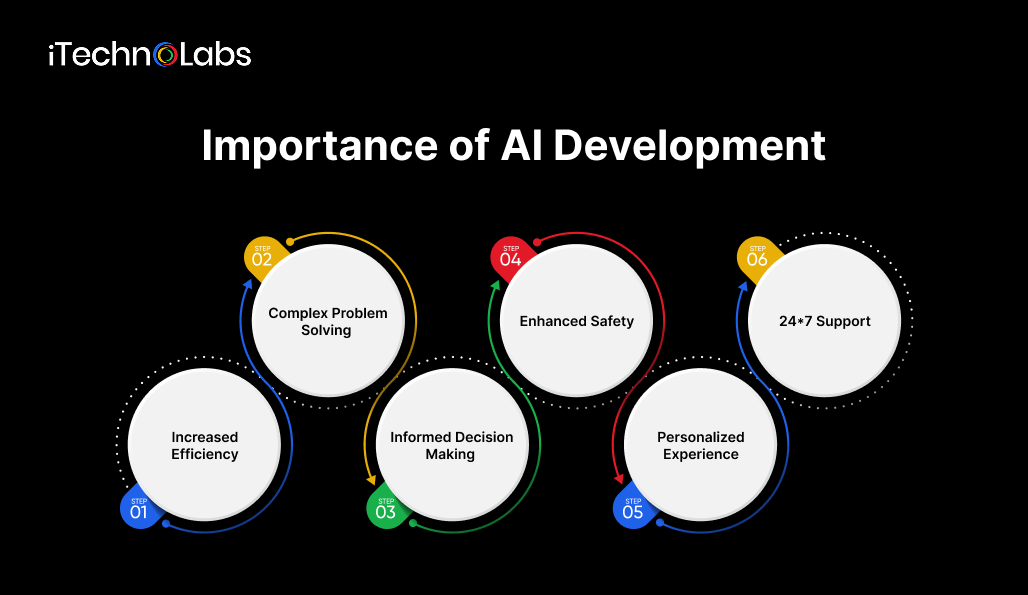
AI development provides a wide range of benefits such as better efficiency, complex problem solving, right decision-making, improved safety, customized experience, and many more. Let’s understand all the benefits of AI development with the following pointers:
1. Increased Efficiency
AI tools automates repetitive tasks making humans free to do other things. This is not just helpful for individuals but organisations can also save a lot of time. Digital marketing agencies for example can use AI tools to create content calendars, schedule social media content, generate reports, and run email campaigns. By assigning time-consuming tasks to AI tools the organizations can focus on innovation and strategic decision making.
2. Complex Problem Solving
AI tools are proficient in analyzing enormous amounts of data in less time. This allows them to find the solutions of complex problems quicker than humans. This capability of AI is crucial in industries like climate change, healthcare, and others. The AI tools using their advanced capabilities can find solutions which a human alone can’t.
3. Informed Decision Making
The AI tools can process mountains of data in real time, providing real-time insights based on which humans can make better decisions. AI analyzes the data with complete accuracy which means when the decisions are based on this analysis, they are right and drive desired results.
Moreover, by analyzing past data, AI can predict future outcomes helping organizations to take preventive measures or prepare for the opportunity as per the case.
4. Enhanced Safety
One of the popular examples of AI in security is AI-enabled cameras. The smart cameras are very good at differentiating between regular human behaviour and irregular, unusual patterns. Thus when the camera notices a suspicious activity it sends a real-time alert to security teams allowing for rapid action and preventing security threats. The cameras can analyze video feeds in real-time and find any anomalies then and there, also saving cost and time of humans.
5. Personalized Experience
By analyzing the past behaviour of users with the apps, the AI tools can change the user interface and suggest better recommendations that aligns with the tastes and preferences of the users. This is immensely helpful for platforms such as Netflix, Disney Hotstar, Amazon Prime and other OTT apps. Showing what the people like can also help drive more sales, increase the number of downloads and a higher retention rate.
6. 24*7 Support
AI tools can work for humans day and night without taking a break. This feature becomes extremely beneficial for domains like customer support, security control, and data collection, and patient monitoring.
In healthcare this means that the doctors will get an alert before the situation escalates, while in case of security this can prevent stealing precious assets of a person or organization.
Suggested Article: The Ultimate Guide to Lovable AI Alternatives in 2025
Real-Life Examples of AI Development
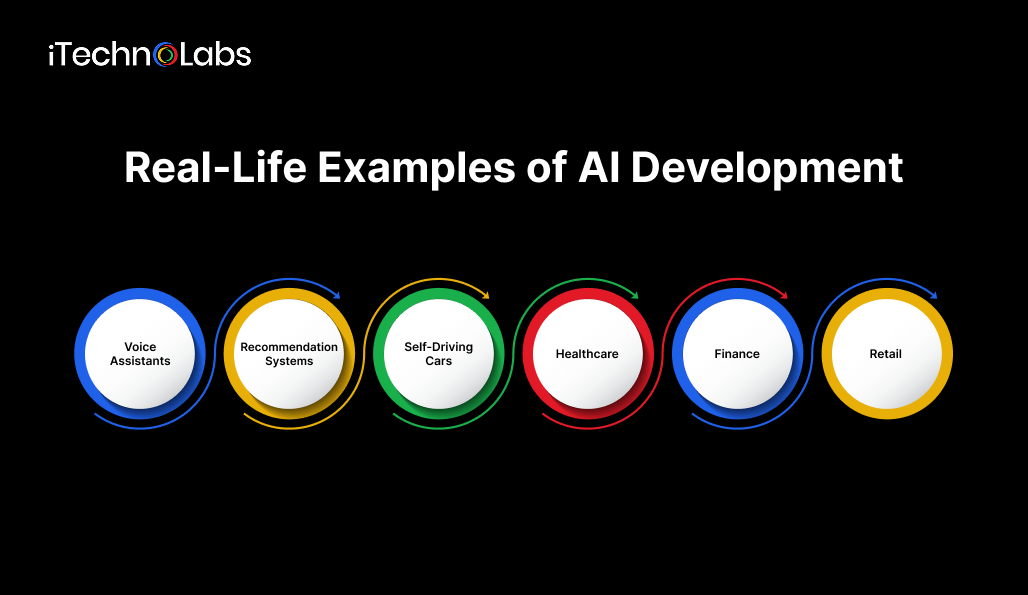
The usage of AI development is not limited to one industry but spans across all major industries in the world. The AI development applications can be seen in daily life. Below are some of the most common examples of AI development :
1. Voice Assistants
Today almost every smartphone user uses voice assistants to play a song, set the alarm, call someone, find answers to their questions and more. The popular voice assistants are Alexa, Siri, and Google assistant.
2. Recommendation Systems
The AI suggests the content by analyzing the watch history of users. It learns the patterns of the viewers and adapts the feed accordingly for next time and thus provides a fulfilling experience. The common examples are movies suggestions by Netflix and songs recommendations by Spotify.
3. Self-Driving Cars
These smart cars use AI to predict the weather, check paths in real-time, and make decisions at a lightning speed. The AI enables cars to recognize traffic signals, humans, converting raw data into actionable commands like acceleration, braking and steering. The popular examples are Tesla and Waymo.
4. Healthcare
Healthcare organizations worldwide are using AI for better diagnosis, drug discovery, and providing personalized treatment plans to patients. A popular example is IBM Watson that uses AI for oncology diagnostics.
5. Finance
AI in finance is used to analyze market data, predict the future pricing movements, mitigate risk, detect fraud, and allow users to make the most of opportunities coming in the way. It plays a key role in decentralized finance (DeFi) through risk management and personalised services. Robinhood, a financial technology company, uses AI for fraud detection and investment recommendations in banks.
6. Retail
In the retail sector, AI streamlines the supply chain, optimizes pricing strategies, and enables self-checkout systems. Amazon, the world’s biggest e-commerce platform, uses AI to suggest personalized shopping for its users.
AI Development Process
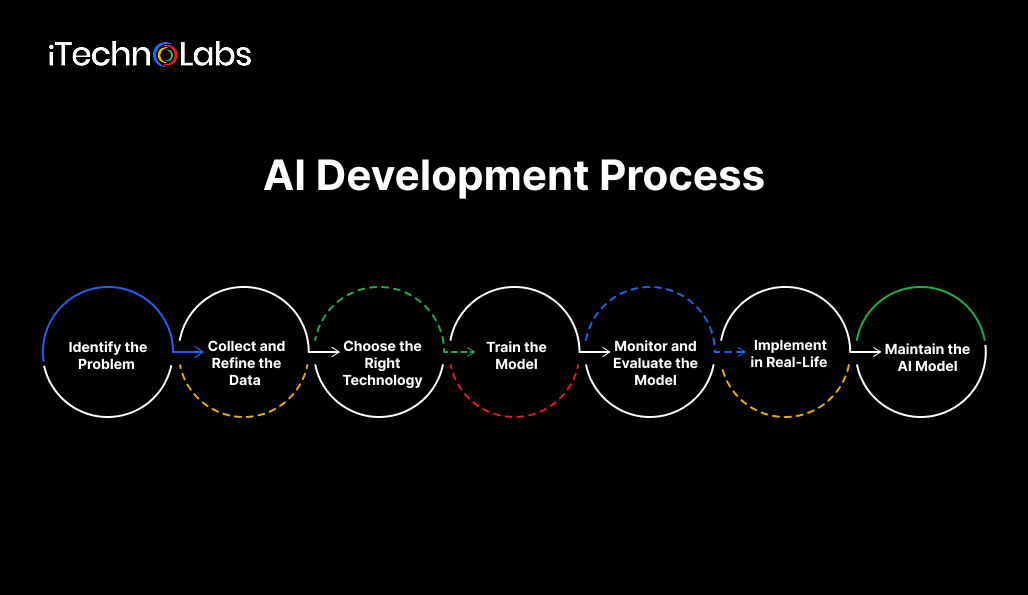
The AI development process consists of 7 steps: find a problem, collect data, choose the right AI model, train the model, monitor performance, implement the model into real-world applications, and lastly maintain its performance. Let’s understand all this steps in detail as follows:
1. Identify the Problem
The very first step in AI development is to identify the problem you want to solve with an AI tool. Once you know the answer to this question you will have clarity and you can move in the right direction.
2. Collect and Refine the Data
Once you have identified the problem, the next step is to collect a large volume of data to train your AI models. You can either gather fresh data or use the old one. One thing which you need to take care of is that the quality of output generated by your AI model will be directly proportional to the accuracy of your provided data.
After collecting the data, refine it by removing errors, eliminating omissions, and organize it in a structured way. The more structured your data will be, the better accuracy AI model will generate.
3. Choose the Right Technology
Selecting the right technology is essential to ensure you develop the exact AI tool you are looking for. There is a variety of AI technologies such as deep learning, natural language processing, machine learning, computer vision, algorithms, robotics and more. After evaluating all technologies you can choose the best technique for developing AI tools.
4. Train the Model
Once you have got the right data and chosen the AI technology, the next step is to train your AI models. Start by teaching AI models to predict outcomes and make decisions based on the given data. You might also be required to adjust the model’s parameter as and when required.
5. Monitor and Evaluate the Model
Continuing the above point, while training the data it’s also important to monitor the accuracy it is providing and check if it is reliable. Based on the evaluation you can improve your AI model to produce quality results. If the results are not fruitful you might need to adjust the parameters or change the model altogether.
6. Implement in Real-Life
Once the AI model has achieved a satisfied level of accuracy it’s time to implement it into real world applications such as voice assistant, image recognition, app development, cybersecurity and more.
7. Maintain the AI Model
Finally, you have to maintain the model’s accuracy by making regular updates and improvements in the system. You will also be required to train the model again as the new data sets will come by.
Also, read: AI Model Collapse Prevention
Conclusion
In 2025, AI is not optional but the need of the hour. Organisations worldwide are using AI to enhance productivity, save costs, improve processes, increase customer satisfaction rate, and drive more sales. Different components of AI development such as deep learning, machine learning, natural language processing, computer vision, algorithm, and robotics allows organizations to build advanced solutions to fulfil their specific requirements. AI development offers a wide range of benefits such as complex problem solving, enhanced safety, increased efficiency, informed decision making, and many more.
For AI development it’s necessary to follow the step-by-step process of identifying the problem, collecting data, choosing the right AI technology, training the model, monitoring performance, integrating into real-world applications, and lastly improving the performance timely. Developing an AI model all by yourself can be too difficult especially when you don’t have a good knowledge of technical skills. Here comes iTechnolabs which has a team of 230+ experienced members who have successfully delivered 840+ projects in the last 9 years. Visit iTechnolabs now and get the best AI model onboard for any of your business’s needs.
FAQs
1. What is AI development?
A development is the process of creating softwares which requires human intelligence to perform tasks like learning, making decisions and solving problems.
2. Who is the father of AI?
John McCarthy is known as the father of artificial intelligence (AI).
3. What are the 7 types of AI?
The 7 types of AI are as follows:
- Narrow AI
- General AI
- Superintelligent AI
- Reactive machines
- Limited memory
- Theory of mind
- Self-aware AI

